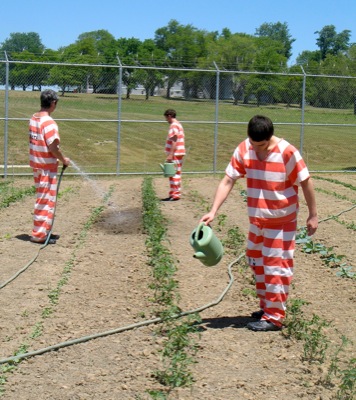Saturday, June 16th, 2012
New farm bill may eliminate direct payments
By Nancy Allen
A Celina area farmer supports the elimination of direct payments in the next farm bill as long as the legislation provides protection for farmers when things go wrong due to the weather or market price drop-offs.
"As far as I'm concerned, as long as we get a viable safety net for when prices go down or when we have some kind of natural disaster, then they can do away with it," Theresa Howick said. "Our worst enemy is Mother Nature."
Congress is currently working on the bill known as the Agriculture Reform, Food and Jobs Act of 2012 that may preclude the direct payment system.
A large percentage of the total farm program payments received each year by farmers in Mercer and Auglaize counties are guaranteed direct payments, according to local Farm Service Agency officials.
The program lets farmers collect direct payments from the government regardless of whether they actually plant a crop.
The officials would not speculate on how the elimination of the direct payment system would affect local farmers.
"It's too early in the (legislative) process to speculate how specific provisions of a piece of evolving legislation will affect local participants," Anita Green, executive director of the Auglaize County FSA, said. "Once the secretary of agriculture publicly engages in the legislative process, we'll have a better idea how local FSA customers will be affected."
Farming is Ohio's biggest industry, with one in seven jobs related to food and agriculture. Mercer County consistently ranks first in farm receipts out of all 88 counties in Ohio while Auglaize County typically ranks in the top 10 to 20. Most farmers in both counties use USDA farm programs in one form or another, Gibbs and Green said.
Ohio legislators and commodity groups are pushing for the passage of the Senate agriculture committee's version of the bill. Sen. Sherrod Brown - the first Ohioan on the Senate's agriculture committee in more than 40 years -outlined provisions of the legislation this week.
The bill's centerpiece calls for cutting $23 billion by eliminating direct payments and replacing them with a program based on current crop-year data, market prices and actual yields. Recent record profit years for farmers due to high market prices have made the direct payments harder to justify, industry officials have said.
The bill would purportedly end numerous redundant programs and crack down on fraud and abuses.
It also would create jobs by boosting the production of farm products to sell directly to consumers and instituting the Grow It Here, Make it Here initiative to augment the manufacture of biobased products made with agricultural materials, Brown said.
"Under the bill, farmers receive support only when they suffer a substantial loss through events beyond their control and only for crops they have actually planted," Brown said.
Ohio Sen. Rob Portman, who also favors ending direct payments, said the bill is good for Ohio grain farmers.
"When you look at the overall bill, it is good in terms of corn and soybean farmers as long as you have the safety net," he said.
That safety net would aid farmers when revenues fall 11 to 21 percent below five-year moving averages and would put greater emphasis on heavily subsidized crop insurance. Farmers' regular crop insurance would pay for losses above 21 percent.
The Ohio Corn and Wheat Growers Association and Ohio Soybean Association also are urging its members to support the Senate's version, saying the revenue-based Agriculture Risk Coverage (ARC) program offers a true safety net for grain farmers.
"Because this version of the bill eliminates direct payments in favor of a true safety net, it will not only benefit the soybean farmers in this state but all U.S. farmers," Bret Davis, president of the Ohio Soybean Association and a Delaware County soybean farmer, said.
Howick said many wonder if the pending legislation will be enacted before the current farm bill expires on Sept. 30. Congress extended the previous farm bill because it wasn't passed by the deadline.
She said many people don't realize that most of the bill doesn't deal directly with farming. Nutrition programs -primarily food stamps - comprise about 80 percent of the cost of the $100 billion-a-year-bill. Historically farm bills are for five years.
Any changes in the next bill would require outreach by local FSA offices to farmers.
"I think the local concern is they (farmers) want to be able to understand it," Green said. "I think that's the key that when a new bill becomes available they can depend on their USDA service center to provide them information they can decipher and manage into the business plans on the farm."
Gibbs and Green said they plan to hold public meetings for farmers after the bill passes to explain any new developments in the bill.
In addition to direct payments, USDA farm programs include price supports for milk, disaster payments, loan deficiency payments, low interest loans, conservation cost share and annual rental payments through the Conservation Reserve Program and crop revenue payment protection.


